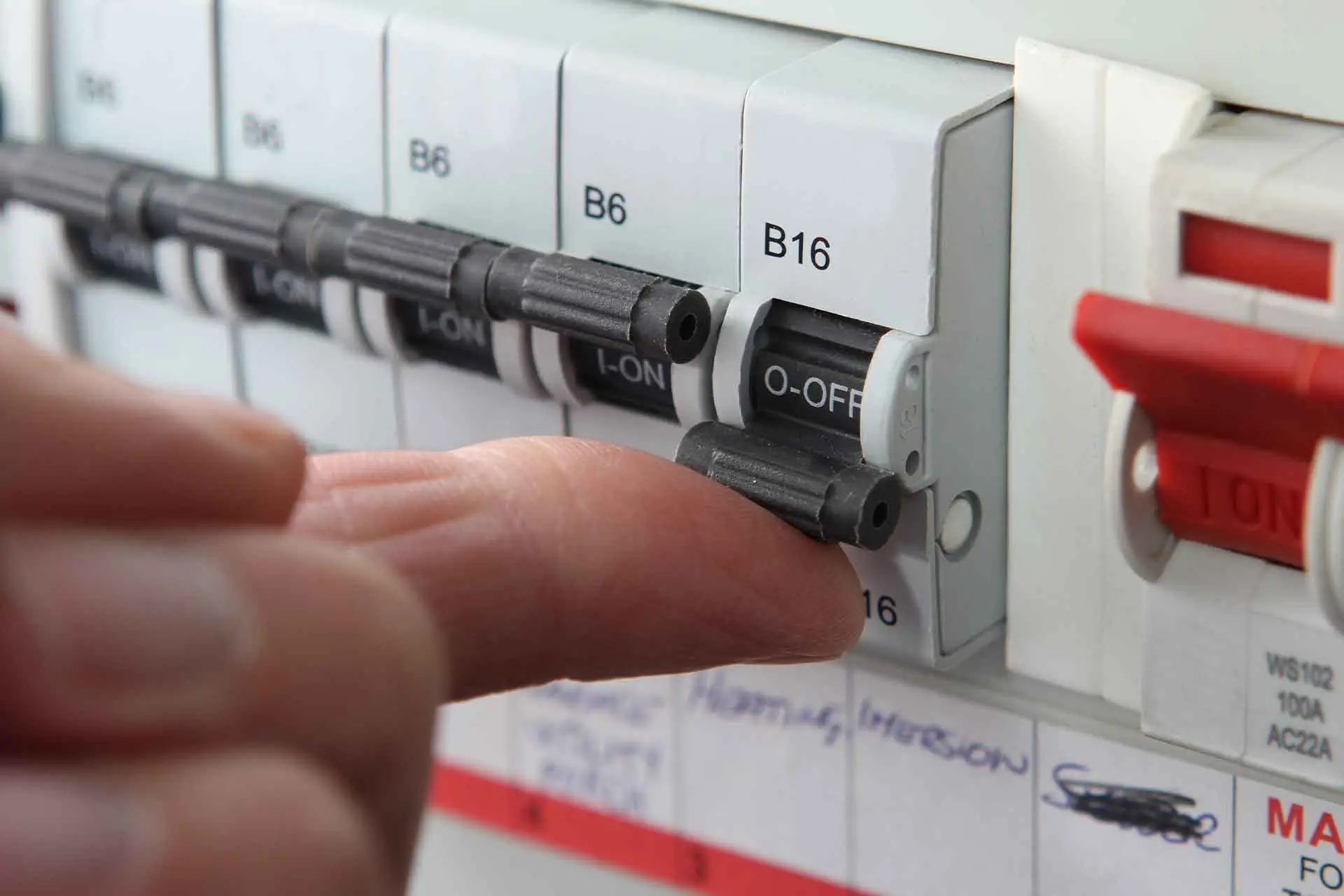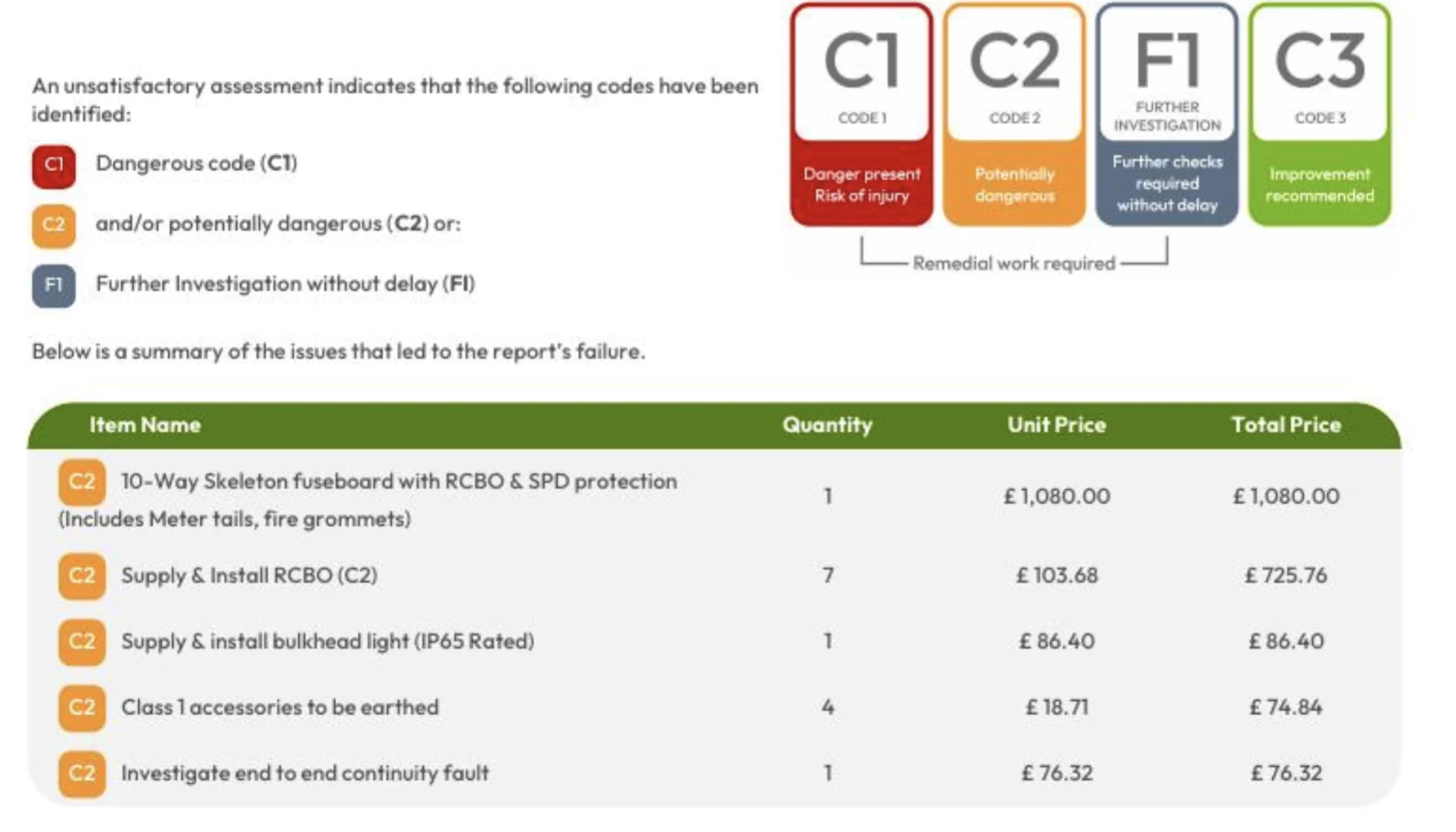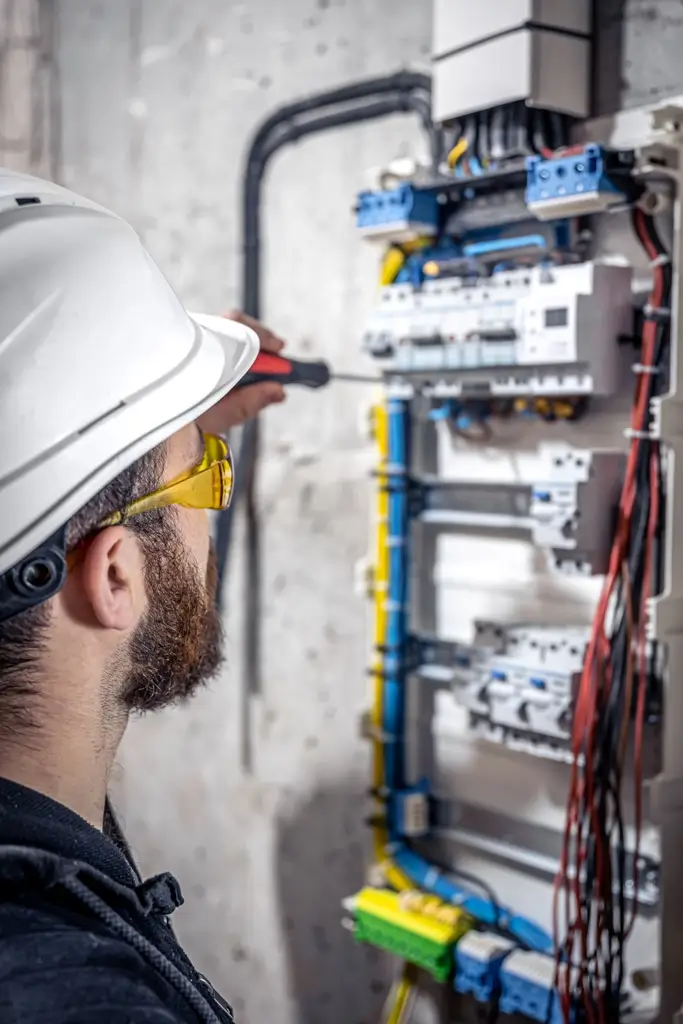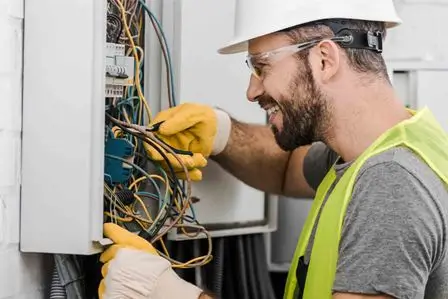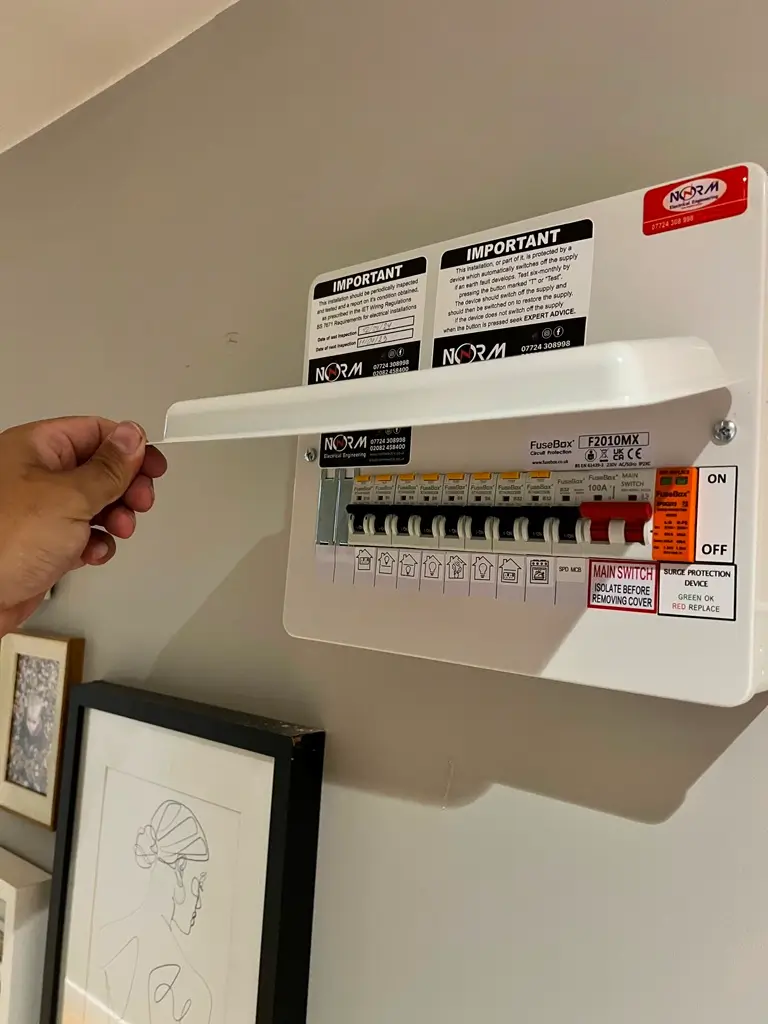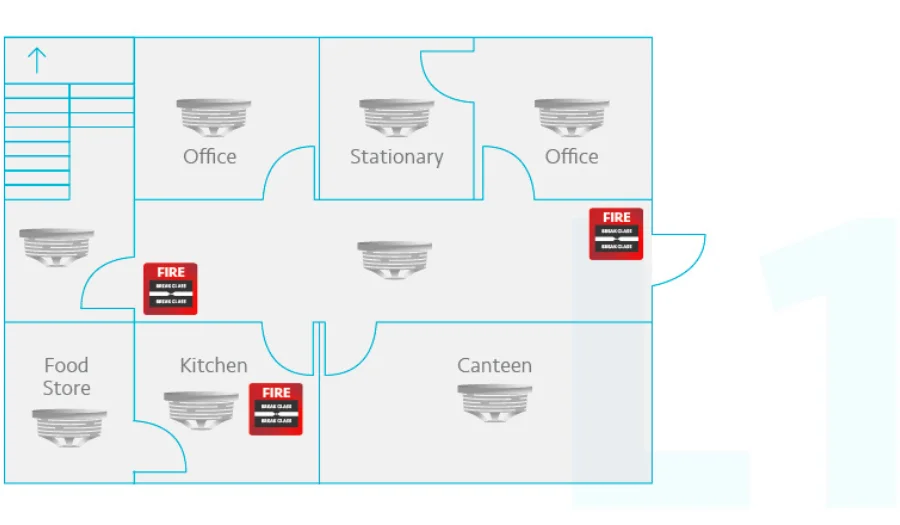Domestic EICR in London: Ensuring Your Home’s Electrical Safety and Compliance
In today’s modern world, where electrical appliances and systems are central to the comfort, safety, and functioning of a home, it is essential to ensure that the electrical installations in your property are in good condition. This is where an Electrical Installation Condition Report (EICR) comes into play. An EICR is a vital safety check that ensures your home’s electrical system complies with safety standards, and it helps prevent electrical hazards that could pose a risk to your property and the people inside it.
This comprehensive guide explains what an EICR is, why it’s necessary for domestic properties in London, how often it should be done, and the benefits of maintaining a safe and compliant electrical system. We also provide insights into how the process works, the legal requirements, and the importance of having a qualified professional carry out the tests.
Table of Contents:
What is a Domestic EICR?
Why is an EICR Important for Your Home in London?
Legal Requirements for Domestic EICR in the UK
How Often Should You Have an EICR in Your London Home?
What Does an EICR Include?
How Much Does an EICR Cost in London?
The Process of Getting an EICR
What Happens if Your Home Fails the EICR?
How to Choose a Qualified Electrician for EICR
Benefits of Regular EICR for Homeowners
Common Electrical Issues Found During an EICR
Conclusion and Next Steps
1. What is a Domestic EICR?
An Electrical Installation Condition Report (EICR) is a detailed inspection and testing process for the electrical system of a property. It involves assessing the safety, condition, and compliance of the electrical wiring, fittings, and appliances within a home. The report is carried out by a qualified and certified electrician who checks if the electrical system is in line with the National Electrical Code (NEC) and the 18th Edition of the IET Wiring Regulations (BS 7671).
The EICR will provide an in-depth assessment of the electrical installation, highlighting any issues such as damaged wiring, exposed conductors, or faulty switches. The report also gives recommendations on any repairs, replacements, or improvements that are necessary to ensure the safety and compliance of the electrical system.
2. Why is an EICR Important for Your Home in London?
There are numerous reasons why having an EICR performed on your home in London is essential:
Safety Assurance
Electrical safety is critical for preventing electrical hazards, such as fires, shocks, and electrocution. Faulty wiring, outdated equipment, or unregulated electrical installations can lead to serious accidents. An EICR ensures that your home’s electrical system is safe to use and free from potential risks.
Identifying Potential Hazards
An EICR can identify faults or issues that might go unnoticed in everyday use. For instance, wiring that is worn out or exposed can lead to electrical fires. Through regular inspections, any such issues can be detected early, preventing accidents before they happen.
Compliance with Legal Requirements
In the UK, landlords are legally required to ensure the electrical systems in their rental properties are safe. While homeowners are not legally bound by the same requirements, it’s strongly recommended that they conduct EICRs periodically to ensure their systems remain compliant with safety regulations.
Peace of Mind
Knowing that your electrical system is thoroughly checked and compliant with safety standards provides peace of mind for you and your family. With an EICR, you can be assured that your home is safe and ready for any electrical requirements.
3. Legal Requirements for Domestic EICR in the UK
The UK Government provides clear guidelines about electrical safety in homes, and while there’s no specific law that requires homeowners to conduct an EICR, certain situations mandate an electrical inspection. Here’s a breakdown of the relevant laws:
The Electrical Safety Standards in the Private Rented Sector (England) Regulations 2020
This legislation requires landlords to ensure that their properties are electrically safe. Landlords must provide an EICR at the start of a tenancy and every five years thereafter. While this does not apply to homeowners who occupy their own properties, it serves as a reminder of the importance of electrical safety.
The Health and Safety at Work Act 1974
Although this act primarily applies to employers and businesses, it highlights the broader importance of electrical safety in all environments. This law emphasizes the need to maintain safe electrical installations, and while it doesn’t directly mandate EICRs for homeowners, it reinforces the need to take responsibility for the safety of your electrical installations.
The Building Regulations 2010 (Part P)
Under these regulations, any significant electrical work carried out in the home (such as rewiring, installing new sockets, or electrical systems in new extensions) must comply with safety standards and be signed off by a qualified electrician. It’s a good practice for homeowners to keep their systems compliant by scheduling regular EICRs.
4. How Often Should You Have an EICR in Your London Home?
While there is no set law that mandates how often a domestic EICR must be performed, experts recommend the following general guidelines based on the condition of the property and its electrical installations:
For New Homes
If your home is newly built or has been fully rewired, an EICR is generally not needed until five to ten years after the work has been completed. During this time, however, it’s wise to ensure any new electrical appliances or additions are also checked by a qualified electrician.
For Older Homes
If your home is older and has not undergone any significant electrical upgrades or rewiring in the past 25 to 30 years, you should consider having an EICR carried out more frequently, ideally every 5 to 10 years. Older systems are more likely to have outdated wiring or components that pose a higher risk of faults.
For Properties with Children or Vulnerable Individuals
In homes where children or elderly individuals reside, it’s prudent to have more frequent checks as these individuals are more likely to be affected by electrical hazards.
After Major Renovations
If you’ve made significant changes to your home, such as installing new electrical systems, extensions, or major electrical equipment, it’s a good idea to have an EICR performed to ensure the safety of the new installations.
Renting Out a Property
If you’re a landlord renting out your property, the law requires you to have an EICR carried out every five years to ensure the safety of the electrical systems for tenants.
5. What Does an EICR Include?
A domestic EICR involves a detailed inspection of your property’s electrical systems, covering a range of key checks to ensure everything is safe and compliant. Here’s what the EICR typically includes:
Visual Inspection
The electrician will first perform a visual inspection of the electrical system, looking for signs of wear, tear, or damage to the wiring, circuit breakers, and electrical components.
Testing of Electrical Circuits
The electrician will then test various circuits in your home to ensure they are working properly. This involves checking for faults, ensuring that the electrical systems are well-grounded, and verifying that there are no hazards.
Assessment of Wiring
The inspection will cover all the electrical wiring, ensuring it is in good condition, safely enclosed, and free from any signs of overheating or corrosion.
Inspection of Sockets, Switches, and Fittings
Sockets, switches, and light fittings will be tested to ensure they’re safe to use and comply with modern electrical safety standards.
Earthing and Bonding Checks
The electrician will verify that all parts of the electrical system, including metallic fittings, are properly earthed to prevent the risk of electric shock.
Test Results and Recommendations
The final report will include the test results, which are classified into three categories: C1 (danger present), C2 (potentially dangerous), and C3 (no immediate danger but recommendations for improvement). Any issues found will be documented along with suggestions for necessary repairs or upgrades.
6. How Much Does an EICR Cost in London?
The cost of a domestic EICR varies based on the size of the property, its location, and the complexity of the electrical system. In London, you can expect to pay:
1 to 2 bedroom flat: Around £150 – £250
3 to 4 bedroom house: Between £250 – £400
Larger properties: Costs can rise to £400+
It’s important to note that while the upfront cost of an EICR might seem high, it’s a small price to pay for the peace of mind and safety of your home.
7. The Process of Getting an EICR
Here’s a step-by-step breakdown of the process:
Contact a Qualified Electrician: Call a registered electrician (such as a member of NICEIC or NAPIT) who is qualified to perform EICRs.
Schedule an Appointment: Agree on a convenient time for the inspection, usually within a few days to a week.
Inspection and Testing: The electrician will conduct the visual inspection and testing of your electrical installations.
Receive the Report: After the inspection, you will receive a detailed report outlining the results of the testing and any recommendations for improvements.
Make Necessary Repairs: If any issues are found, you will need to have them repaired by a qualified electrician.
8. What Happens if Your Home Fails the EICR?
If your home fails the EICR, it means there are serious issues with the electrical installation that must be addressed. The electrician will classify the issues as C1, C2, or C3, and provide you with a list of necessary repairs or improvements.
You will be required to rectify any C1 or C2 issues immediately. These are serious hazards that could cause electric shock or fire. After the repairs are completed, you will need to have a re-test to ensure that the system is now safe.
9. How to Choose a Qualified Electrician for EICR
It’s crucial to hire a qualified and certified electrician for your EICR. Look for:
Accreditations: Ensure they are a member of a recognized body like NICEIC or NAPIT.
Experience: Check that the electrician has experience in performing EICRs for domestic properties.
References: Ask for recommendations or read online reviews to gauge their reputation.
Insurance: Ensure they are fully insured in case of any mishaps.
10. Benefits of Regular EICR for Homeowners
Prevents Electrical Hazards: Regular inspections help catch potential hazards early.
Ensures Compliance: It helps maintain compliance with safety regulations.
Increases Property Value: A safe and well-maintained electrical system can increase the resale value of your property.
Peace of Mind: Knowing your electrical system is safe ensures peace of mind for you and your family.
11. Common Electrical Issues Found During an EICR
Faulty Wiring: Old or damaged wiring can pose a fire risk.
Outdated Electrical Panels: Electrical panels that are not compliant with modern standards can be dangerous.
Loose Connections: Loose wires and connections can cause overheating and arcing.
Overloaded Circuits: Overloading circuits can lead to fires and equipment damage.
Lack of Proper Earthing: Inadequate earthing increases the risk of electric shock.
Conclusion and Next Steps
Having a Domestic EICR in London is an essential step toward ensuring the safety of your home’s electrical system. By conducting regular inspections, you can avoid potential electrical hazards, stay compliant with safety standards, and enjoy peace of mind knowing that your family is safe.
If you’re in need of an EICR or any other electrical service, Norm Electrical Engineering is here to help. With years of experience in the industry, we provide professional and reliable EICR services to ensure your home remains safe and compliant.
Contact us today at 020 8245 8400 or 0772 430 8998 to book your EICR inspection.
For more information on electrical safety, visit the official UK government website on Electrical Safety.



